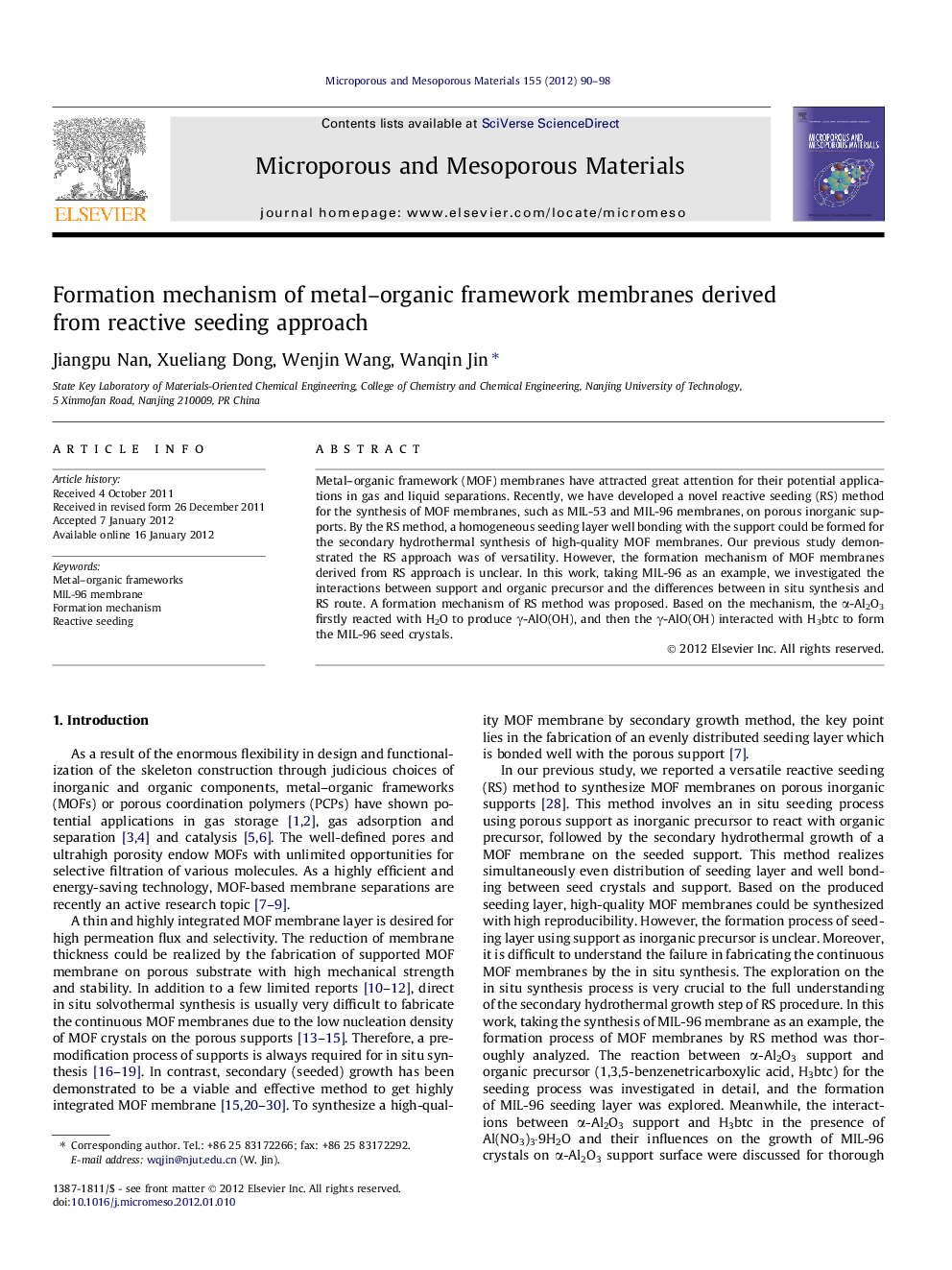| Article ID | Journal | Published Year | Pages | File Type |
|---|---|---|---|---|
| 73874 | Microporous and Mesoporous Materials | 2012 | 9 Pages |
Metal–organic framework (MOF) membranes have attracted great attention for their potential applications in gas and liquid separations. Recently, we have developed a novel reactive seeding (RS) method for the synthesis of MOF membranes, such as MIL-53 and MIL-96 membranes, on porous inorganic supports. By the RS method, a homogeneous seeding layer well bonding with the support could be formed for the secondary hydrothermal synthesis of high-quality MOF membranes. Our previous study demonstrated the RS approach was of versatility. However, the formation mechanism of MOF membranes derived from RS approach is unclear. In this work, taking MIL-96 as an example, we investigated the interactions between support and organic precursor and the differences between in situ synthesis and RS route. A formation mechanism of RS method was proposed. Based on the mechanism, the α-Al2O3 firstly reacted with H2O to produce γ-AlO(OH), and then the γ-AlO(OH) interacted with H3btc to form the MIL-96 seed crystals.
Graphical abstractFigure optionsDownload full-size imageDownload as PowerPoint slideHighlights► A formation mechanism of MIL-96 membrane derived from reactive seeding approach was proposed. ► The α-Al2O3 support surface transforms into γ-AlO(OH), reacting with H3btc solution to form MIL-96 seeding layer. ► Secondary growth based on the seeding layer is robust to synthesize highly integrated MIL-96 membrane.
